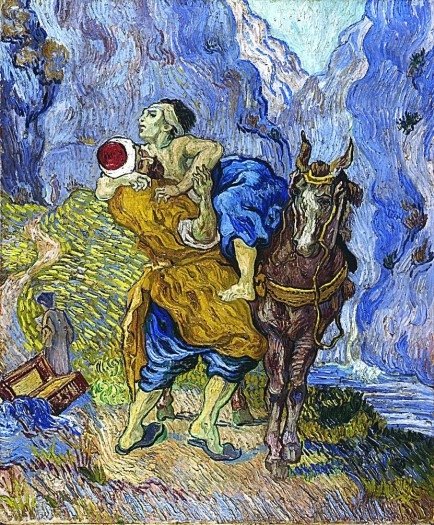How do we view visual art, and what happens to us when we view certain works in a contemplative way? Sometimes art with religious themes can transport even those who do not agree with the faith tradition of the artist. Pelagia Horgan wrote about the art of Fra Angelico and others. She refers to a photograph in the article, a photo of the inside of a monastic cell in Florence. Fra Angelico did frescos on the walls of this monastery, and the photo is of the inside of one of the monastic cells, of its walls, its window, and the fresco. Horgan in her article grapples with the apparent incongruity of being touched by religious art when she does not hold a set of cognitive beliefs that are the same as the beliefs of that particular religion. She writes:

Samaritaan by Vincent Van Gogh
“It struck me that this is what faith is – not a set of propositions you hold to be true, or a set of rules you follow, but an atmosphere you live in, that changes your experience of the world, your sense of what and how things are.” http://aeon.co/magazine/culture/how-should-secular-people-approach-sacred-art/
This is an enriching view, it seems to me. Not that beliefs have no value, but I spend a lot of time in the borderlands of those who assert set beliefs and those who disagree with them. Certain art can step beyond those boundaries if we let it, changing our experience of the world, our sense of what and how things are…
